How to Combat Frizz in Humid Weather: A Step-by-Step Guide | Ultimate Anti-Frizz Secrets
The Ultimate Battle: Your Hair vs. Humidity
That dreaded moment: you spend an hour perfecting your hair, only to step outside into a wall of humidity and watch your sleek style instantly transform into a frizzy, unmanageable halo. It’s a frustratingly common experience, especially during warm, damp months. The moisture in the air seems to have a personal vendetta against smooth hair, causing it to swell, puff up, and defy all attempts at control. This struggle is not just in your head; it’s a scientific reaction happening at a microscopic level on every strand of your hair. Understanding this process is the first step toward winning the war against frizz.

This is more than just a bad hair day; it’s a constant battle that can affect confidence and add unnecessary stress to your routine. But what if you could finally learn how to combat frizz in humid weather effectively? The good news is, you can. It’s not about finding one magic potion, but about building a strategic, multi-layered defense system. This comprehensive guide will walk you through a step-by-step process, from the science behind the frizz to the professional treatments that offer long-term solutions. Get ready to arm yourself with the knowledge and techniques to achieve smooth, humidity-proof hair that lasts all day, no matter what the forecast says.
Understanding the Science: Why Does Hair Frizz in Humidity?
Before you can effectively combat frizz, it's crucial to understand why it happens. Hair, at its core, is made up of bundles of keratin proteins. These proteins are held together by two types of bonds: permanent disulfide bonds (which determine your hair's natural texture, like straight or curly) and weaker, temporary hydrogen bonds. When your hair is dry, these hydrogen bonds are stable. However, water molecules in the air—abundant in humid conditions—are masters at forming new hydrogen bonds. When moisture from the air penetrates your hair shaft, it forms new bonds with the keratin proteins, causing the hair strand to swell and bend irregularly. This swelling forces the outermost layer of the hair, the cuticle, to lift and separate, resulting in the rough, uneven texture we call frizz.
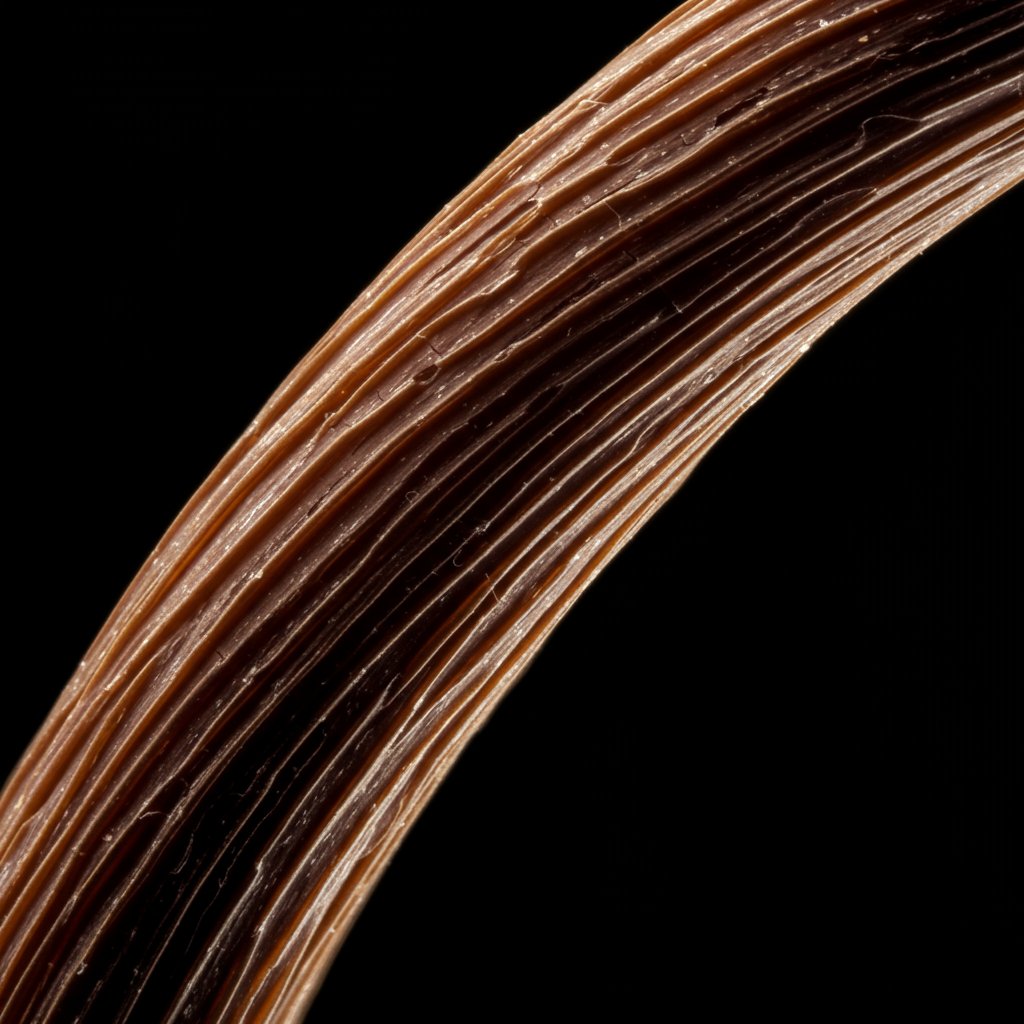
Not all hair is created equal when it comes to humidity. The key factor is porosity. Hair that is dry, damaged, or chemically treated is typically more porous. This means its cuticle layer is already slightly raised, creating tiny gaps that eagerly soak up moisture from the environment like a sponge. This is why color-treated or heat-damaged hair often seems to frizz up more quickly than healthy, virgin hair. Conversely, low-porosity hair has a tightly sealed cuticle, making it more resistant to atmospheric moisture. By understanding that frizz is essentially thirsty hair reaching out for moisture, you can see why the solution lies in providing deep, lasting hydration and sealing the cuticle to block external humidity from getting in.
Step 1: The Foundation - A Hydrating Wash & Care Routine
Your fight against frizz begins in the shower. The products you use to wash and condition your hair set the stage for everything that follows. In a humid climate, your primary goal is to infuse your hair with as much moisture as possible to prevent it from seeking it from the air. Start by switching to a sulfate-free shampoo. Sulfates are harsh detergents that can strip your hair of its natural oils, leaving it dry, brittle, and highly porous—a perfect recipe for frizz. A gentle, hydrating, sulfate-free formula will cleanse your hair without compromising its natural moisture barrier.
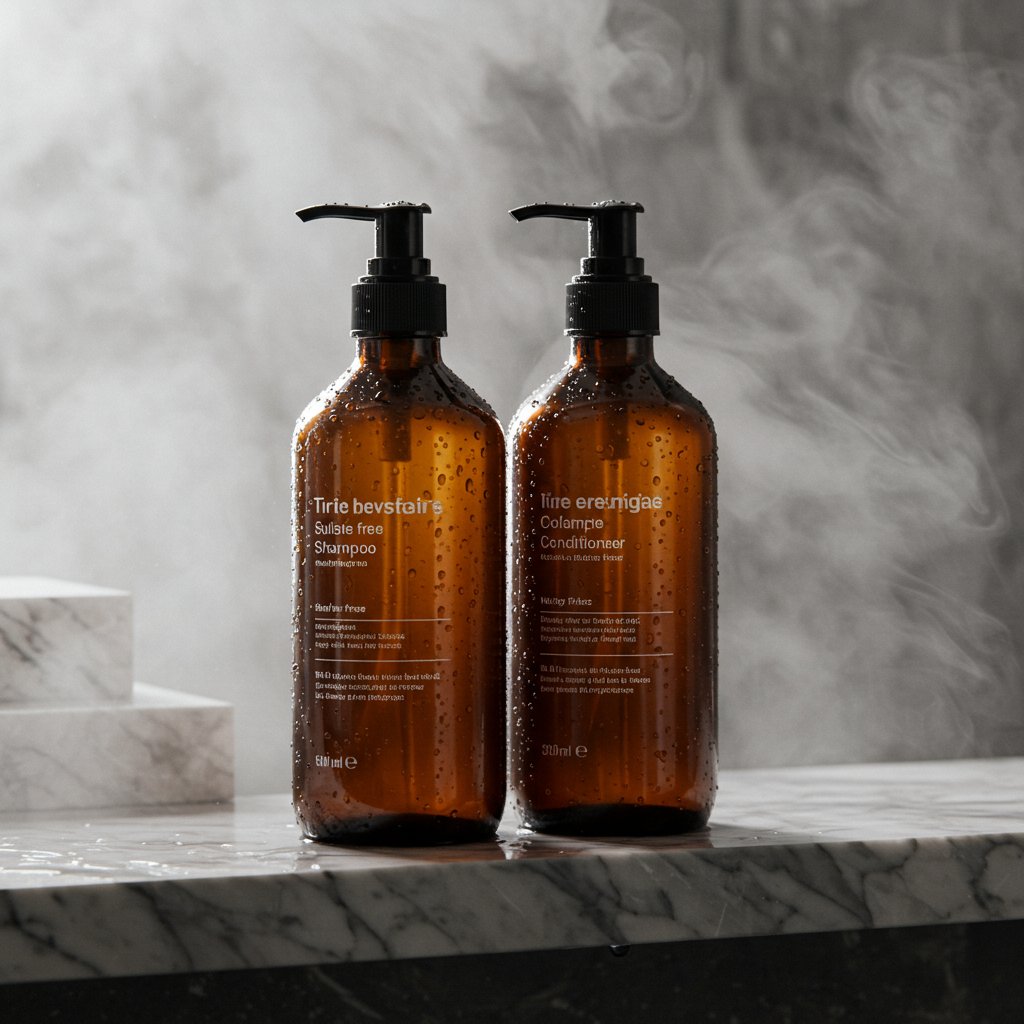
Choosing the Right Cleansers and Conditioners
Look for ingredients like glycerin, which is a humectant that pulls moisture into the hair shaft, as well as natural oils and butters like argan oil, coconut oil, and shea butter. After shampooing, never skip conditioner. A rich, moisturizing conditioner is your first line of defense in smoothing the hair cuticle. Apply it generously from the mid-lengths to the ends, where hair is typically the driest. Let it sit for a few minutes to allow it to penetrate deeply before rinsing. For an extra layer of protection, finish your rinse with a blast of cool water. This simple trick helps to snap the cuticle shut, creating a smoother surface and locking in the moisture from your conditioner.Washing Frequency and Water Temperature
How often you wash your hair also plays a role. Over-washing, especially with hot water, can strip away protective oils. Try to extend the time between washes if possible. When you do wash, use lukewarm water instead of hot. Hot water opens up the hair cuticle, making it more susceptible to frizz, while lukewarm or cool water helps to keep it sealed. On non-wash days, a good dry shampoo can absorb oil at the roots without drying out the rest of your hair. This foundational step of proper washing and conditioning is non-negotiable for anyone looking to combat frizz in humid weather.Step 2: Sealing the Cuticle - Leave-Ins and Serums
Once you’ve created a hydrated base in the shower, the next critical step is to apply products to damp, towel-dried hair. This is your opportunity to lock in the moisture you’ve just added and create a protective barrier against the humidity to come. Applying products to damp hair is far more effective than applying them to dry hair, as the water helps to distribute the product evenly and the product helps to seal the cuticle as the hair dries. The key is to layer products strategically, starting with the lightest and moving to the heaviest.
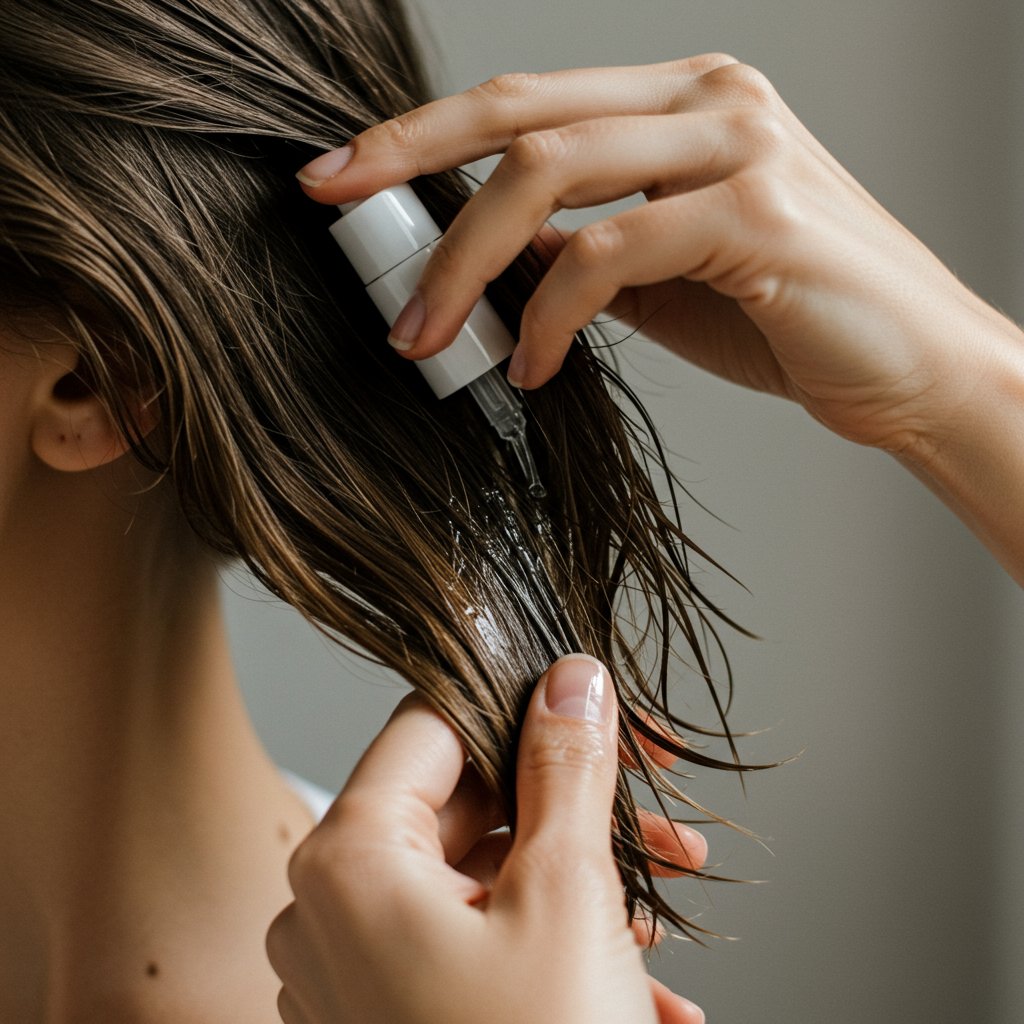
The Power of Layering Products
A lightweight leave-in conditioner is an excellent first layer. It provides a continuous dose of moisture and detangling benefits throughout the day. Look for spray or lotion formulas that won’t weigh your hair down. After the leave-in conditioner, it's time for a more concentrated frizz-fighter: a serum or cream. Anti-frizz serums, often silicone-based, work by coating the hair shaft with a thin, water-repellent film. This film smooths the cuticle and physically blocks humidity from penetrating the hair. If you have fine hair, use serums sparingly and focus on the mid-lengths and ends to avoid greasy roots. For thicker, coarser hair, an anti-frizz cream might be more effective. These creams often contain nourishing oils and butters that provide both moisture and control.Application is Everything
When applying these products, technique matters. Instead of rubbing them between your palms and scrunching them in, which can rough up the cuticle, emulsify the product in your hands and gently glide it down your hair sections using your fingers like a comb. This method, often called the 'praying hands' technique, ensures even distribution and encourages the cuticle to lie flat. Pay special attention to the ends and any other areas that are particularly prone to dryness and frizz. This step is your primary shield and is essential to keeping your hair smooth and polished.Step 3: Smart Styling Techniques for Humid Days
How you dry and style your hair can either fortify your anti-frizz efforts or completely undermine them. The goal of styling in humid weather is to get the hair cuticle as smooth and sealed as possible. If you use heat styling, it's imperative to use a heat protectant spray first. This not only prevents damage but also often contains ingredients that help to fight frizz. When blow-drying, always attach the concentrator nozzle. This directs the airflow in a focused stream, allowing you to aim it down the hair shaft from root to tip. This motion helps to force the cuticle to lie flat, creating a sleek, polished surface.
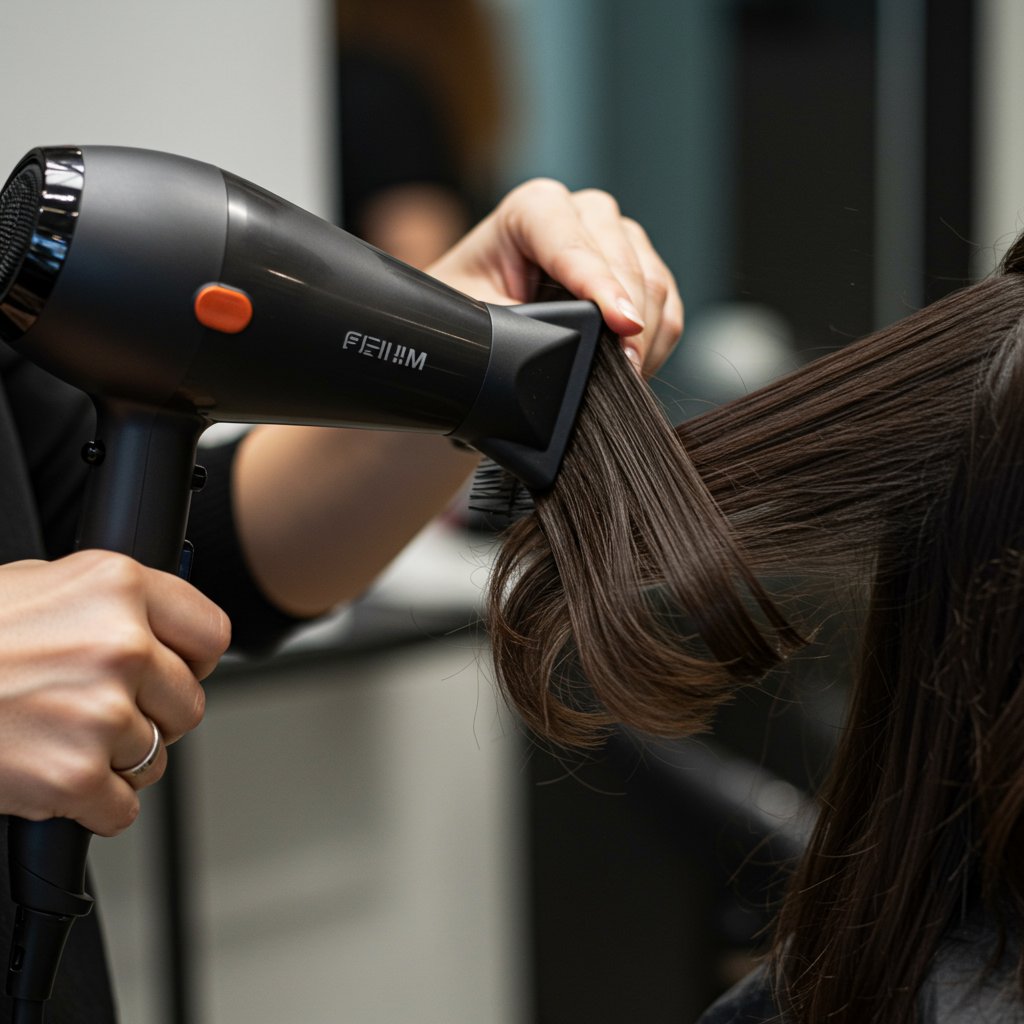
Mastering the Blow-Dry
Rough-drying your hair by blasting it in all directions is a major frizz culprit. Instead, work in manageable sections, using a round or paddle brush to create tension and guide the hair. Keep the dryer moving to avoid concentrating too much heat on one spot. Once a section is completely dry, finish it with the 'cool shot' button on your blow dryer. This blast of cold air rapidly cools the hair, setting the style and locking the smoothed cuticle in place. It’s a small step that makes a significant difference in the longevity of your style and its resistance to humidity.Choosing the Right Tools
The technology in your styling tools also matters. Ionic blow dryers are particularly effective because they emit negative ions that break down water molecules, allowing the hair to dry faster with less heat damage. These negative ions also neutralize the positive charge in hair, which helps to reduce static and close the cuticle. Similarly, when using flat irons or curling irons, look for tools with ceramic or tourmaline plates. These materials distribute heat more evenly and generate negative ions, resulting in a smoother, shinier finish that is better equipped to stand up to moisture in the air.Step 4: The Finishing Touches - Anti-Humidity Sprays and Oils
Your hair is washed, treated, and styled to perfection. The final step is to lock it all in and create one last barrier against the elements. This is where finishing products come into play. These are specifically designed to shield your hair from environmental humidity. An anti-humidity hairspray is a must-have in any frizz-fighting arsenal. Unlike traditional hairsprays that provide hold, these are formulated with water-repelling ingredients that create an invisible, weightless shield around each strand. It's like a raincoat for your hair.
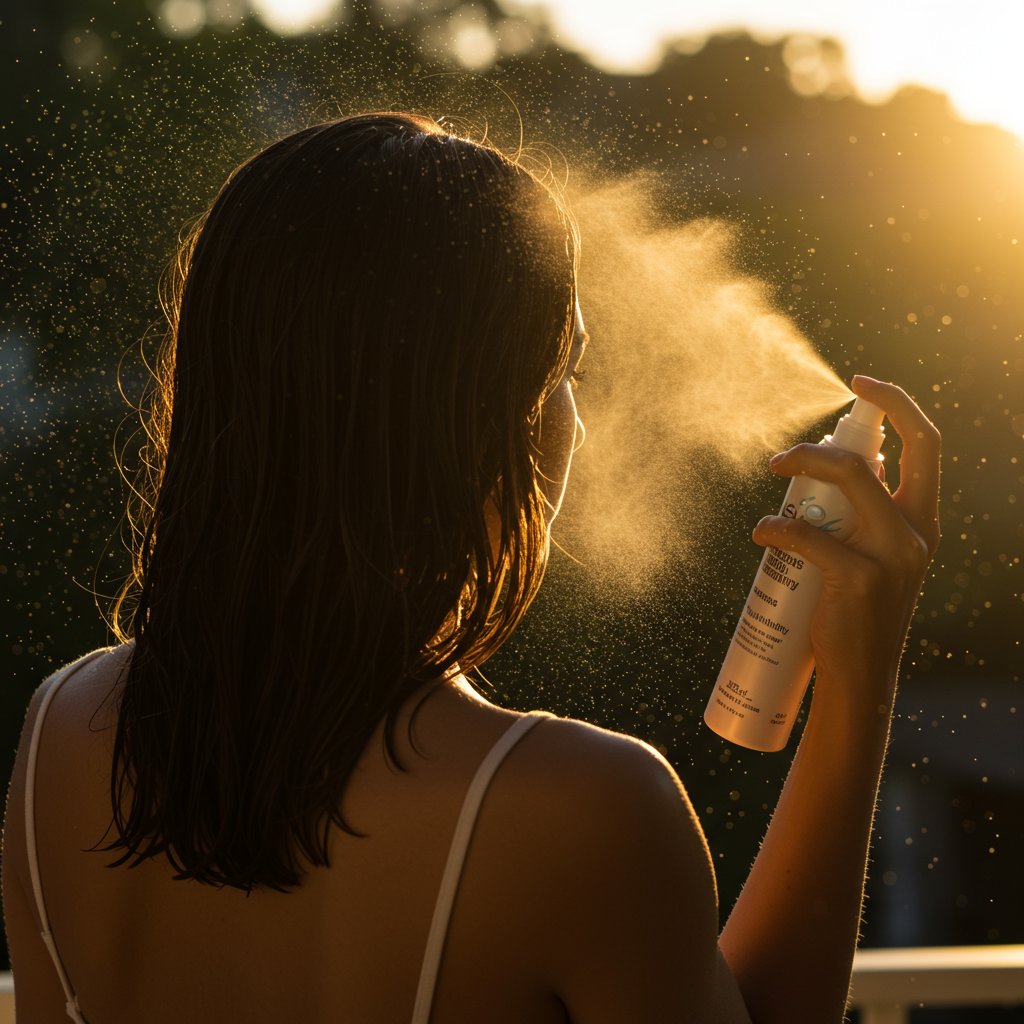
After your style is complete and your hair has cooled down, lightly mist an anti-humidity spray all over. Hold the can about 8-10 inches away from your head to ensure a fine, even application rather than a concentrated, sticky patch. For extra protection around the hairline, where flyaways often appear first, you can spray a small amount onto a clean makeup brush or toothbrush and gently smooth down the edges. This targeted application gives you control without disrupting your style.
A light finishing oil or shine serum can also be used as a final touch. A single drop warmed between your palms and smoothed over the surface of your hair can add shine, tame any last-minute flyaways, and provide a final layer of moisture-blocking sealant. Be careful not to overdo it, as too much oil can make the hair look greasy. This final step ensures that all your hard work is protected, giving you the confidence that your smooth style will hold up, even when the humidity is high.
Step 5: Professional Salon Treatments for Long-Term Frizz Control
While a daily routine is effective, sometimes you need to bring in the heavy artillery for more lasting results. Professional hair salons offer a range of smoothing treatments that can dramatically reduce frizz for weeks or even months at a time. These in-salon services work by infusing the hair with ingredients that smooth the cuticle from the inside out, making it much more resilient to humidity. They are an excellent option for those with persistently frizzy, unmanageable hair or for anyone looking for a low-maintenance solution during the most humid seasons.
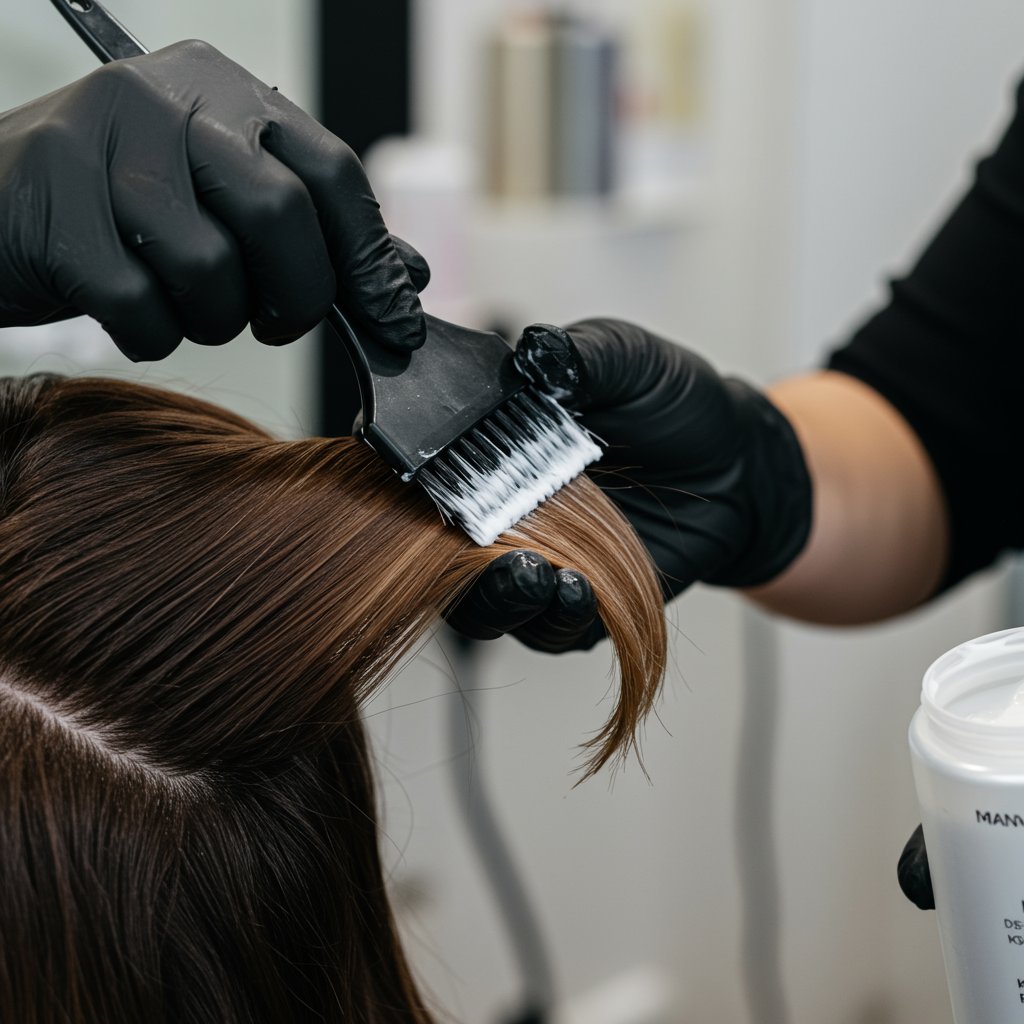
One of the most well-known options is the keratin treatment, also known as a Brazilian blowout. These treatments coat the hair shaft with a layer of keratin protein, filling in the porous gaps in the cuticle and creating a smooth, strong, and glossy surface. The result is significantly reduced frizz and faster drying time. Newer, formaldehyde-free smoothing treatments offer similar results with gentler formulas. An experienced stylist can assess your hair type, condition, and desired outcome to recommend the best treatment for you. These services are an investment, but the time saved on daily styling and the consistent, frizz-free results are often well worth it.
Beyond chemical smoothing, regular deep conditioning treatments at a salon can make a world of difference. Professional-grade masks contain a higher concentration of reparative and moisturizing ingredients than at-home versions. A monthly treatment can restore elasticity, strengthen the hair shaft, and provide the deep hydration needed to keep the cuticle sealed and smooth. Consulting with a stylist allows for a personalized approach, ensuring your hair gets exactly what it needs to stay healthy and combat frizz effectively.
Bonus Tips & Lifestyle Habits for Frizz-Free Hair
Beyond your product and styling routine, several small lifestyle adjustments can contribute significantly to your anti-frizz campaign. These habits help maintain the health of your hair, making it naturally more resistant to humidity.
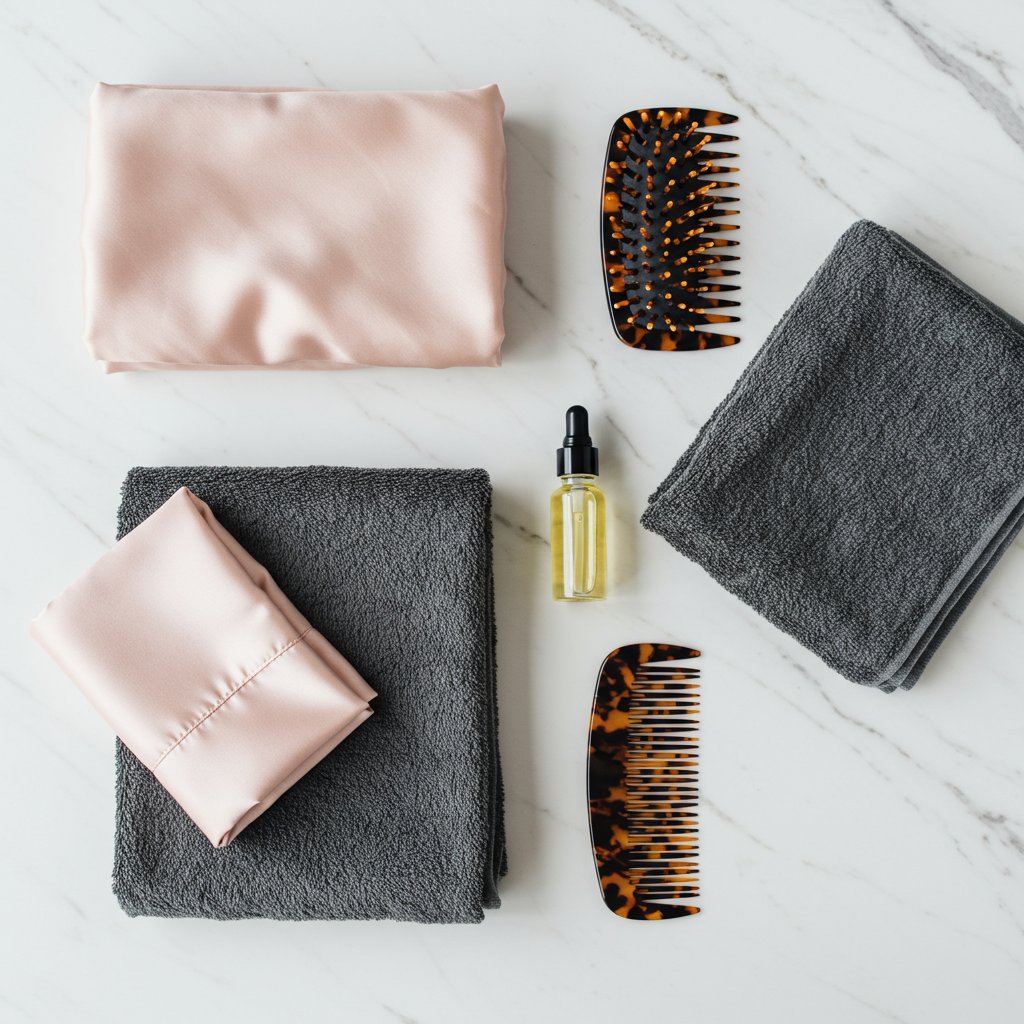
- Swap Your Towel: Standard cotton towels have rough fibers that can snag and raise the hair cuticle, creating frizz. Switch to a microfiber towel or an old, soft t-shirt to gently squeeze and blot excess water from your hair. This is much gentler and helps keep the cuticle smooth.
- Sleep on Silk or Satin: Cotton pillowcases can absorb moisture from your hair and cause friction as you toss and turn, leading to frizz and breakage. A silk or satin pillowcase provides a smooth, frictionless surface, helping to preserve your style and keep your hair smooth overnight.
- Hands Off: Constantly touching, running your fingers through, or playing with your hair transfers oils and dirt, and more importantly, disrupts the cuticle. Once your hair is styled, try to touch it as little as possible throughout the day.
- Hydrate from Within: Healthy hair starts from the inside. Drinking plenty of water and maintaining a balanced diet rich in vitamins and omega-3 fatty acids contributes to overall hair health, making it stronger and less prone to dryness and frizz.
- Regular Trims: Split ends can travel up the hair shaft, making hair look dry, damaged, and frizzy. Getting regular trims every 6-8 weeks removes the damaged ends and helps maintain the overall health and smoothness of your hair.
Frequently Asked Questions (FAQ)
Q1: Does hair type affect how much it frizzes in humidity?
Absolutely. While all hair types can frizz, some are more susceptible than others. Curly and wavy hair textures naturally have a more raised cuticle, making them more porous and prone to absorbing moisture from the air. Similarly, hair that is chemically treated (colored, permed, or relaxed) or damaged from heat styling is also more porous and will frizz more easily than healthy, low-porosity hair.
Q2: Can I just use oil on my hair to stop frizz?
Hair oil can be a great tool, but it's most effective as a final sealing step, not a one-stop solution. Oils help to lock in moisture and smooth the cuticle, but they work best when applied to hair that is already properly hydrated from a good conditioner and leave-in product. Applying oil to dry, dehydrated hair can sometimes block it from receiving moisture, so it's best used as part of a comprehensive routine.Q3: How often should I use an anti-frizz treatment?
For at-home treatments like deep conditioning masks, once a week is a great schedule to maintain optimal hydration and strength. For professional in-salon treatments like keratin smoothing, it depends on the specific service. They can last anywhere from 6 weeks to 5 months. Your stylist will provide a recommendation based on your hair type and the treatment used.Q4: Is it better to air-dry or blow-dry hair in humid weather?
This is a great question with a surprising answer. While air-drying avoids heat damage, it allows hair to dry slowly, giving it more time to absorb ambient moisture and potentially frizz up. A controlled blow-dry using a nozzle to direct airflow downwards is often more effective for creating a smooth, sealed cuticle that can resist humidity. If you prefer to air-dry, make sure to apply anti-frizz styling creams and avoid touching it as it dries.Q5: Why does my hair still frizz after using anti-frizz products?
This usually comes down to one of three things: application, product choice, or not using enough product. Ensure you are applying products to damp, not soaking wet or dry, hair. Make sure the products are right for your hair type (e.g., lightweight for fine hair, richer creams for coarse hair). Finally, don't be afraid to use a sufficient amount of product to thoroughly coat your strands. A single pea-sized amount may not be enough for long or thick hair.Q6: Are there any natural remedies for frizzy hair?
Yes, several natural ingredients can help. An apple cider vinegar rinse (diluted with water) after conditioning can help seal the hair cuticle due to its acidic pH. Natural oils like argan, coconut, and jojoba oil are excellent for sealing and moisturizing. An avocado hair mask, rich in fatty acids and vitamins, can also provide deep hydration to combat frizz naturally.Your Ultimate Guide to Smooth, Humidity-Proof Hair
Navigating a humid day doesn't have to end in a frizzy hair disaster. By understanding the science behind frizz and adopting a strategic, multi-step approach, you can take back control and maintain a smooth, polished style. The journey to combat frizz in humid weather begins with building a strong foundation of moisture, from your choice of shampoo to your weekly deep conditioning masks. It continues with the crucial step of sealing that moisture in with the right leave-ins and serums, followed by smart, cuticle-smoothing styling techniques.

Remember that consistency is key. Layering your products, protecting your hair from friction, and investing in occasional professional treatments all work together to build a powerful defense against humidity. Every step, from the cool water rinse to the final mist of anti-humidity spray, contributes to the overall result. Armed with this knowledge, you are now equipped to face any forecast with confidence, knowing your hair will remain as sleek and stylish as when you first stepped out the door. For personalized advice and treatment recommendations tailored to your unique hair needs, consulting with a professional stylist is always the best next step.


